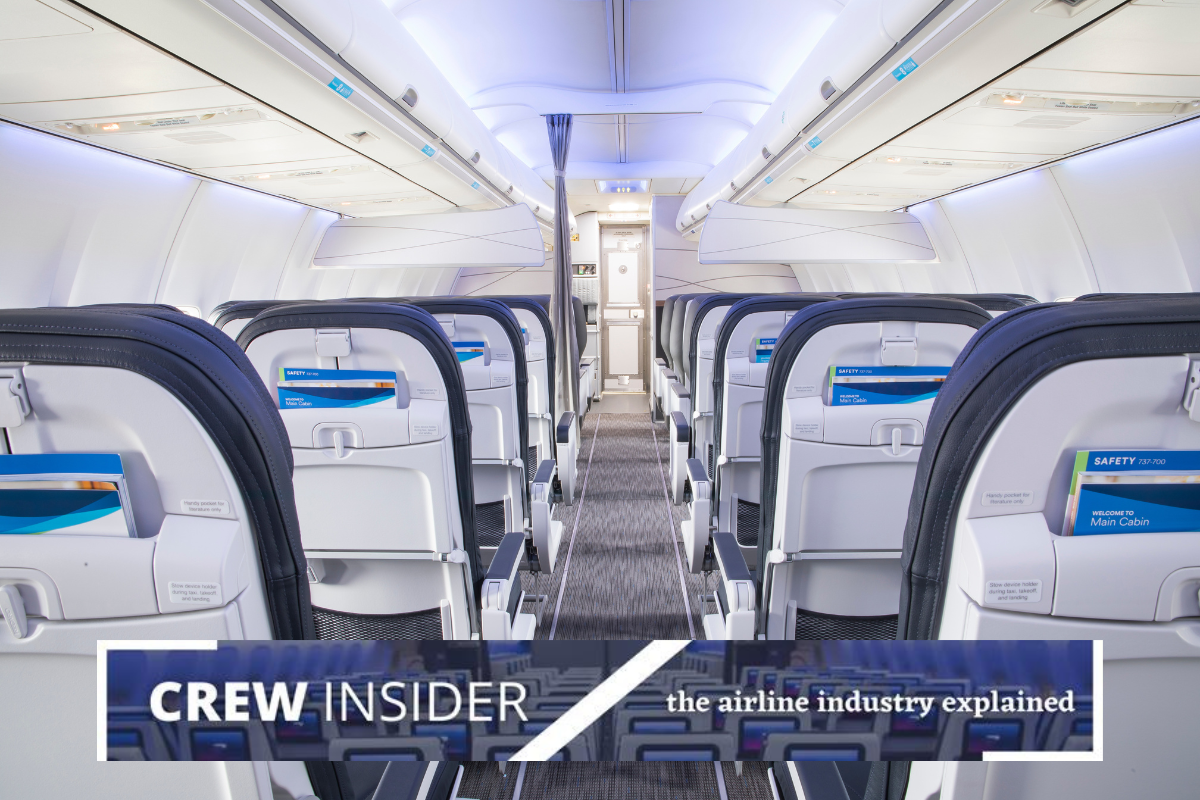
Crew Insider is our series of informative articles that answer some of the most common and less common questions about the aviation industry from the point of view of an industry insider. Our question answerer-in-chief is Mateusz Maszczynski, who has worked in the airline industry for nearly two decades and has honed his expertise in the field through this blog since 2015.
Here’s an interesting question that left one passenger on a recent United Airlines flight confused and searching for answers. The passenger was traveling from Los Angeles to Las Vegas and noticed a Delta Air Lines flight attendant in full uniform traveling as a passenger on the same flight.
Obviously, Delta and United Airlines are two very different airlines that belong to separate alliances and don’t have any major reciprocal business arrangements, so why would you find a flight attendant for a rival carrier traveling on a United airplane?
Pilots and flight attendants, especially in the United States, take the concept of commuting to a whole new level and within the aviation industry when you refer to ‘commuting’ you’re not talking about a short drive, but rather flying from your home town to the base that you generally fly out of.
While some aircrew just prefer to live in a different location from their base, for many others, the simple reality of the matter is that they can’t live in the big urban centers like New York, Los Angeles, and Miami that their airlines have based them out of.
Using concessionary travel benefits, known as non-revenue tickets or ‘non-revving’ for short, many flight attendants and pilots find it cheaper to fly to and from work.
But why would a Delta flight attendant choose a United Airlines flight over their own employer’s flights?
Non-revenue tickets are offered on a space-available basis so if there’s no room on one flight, aircrew need to list themselves on standby for the next available flight. US carriers know how much their staff rely on non-revenue flying, especially to get to and from work, so they have reciprocal travel arrangements with one another.
In this case, the Delta flight attendant found a flight with seat availability that matched their needs – it didn’t matter whether the flight was operated by United or another carrier like American Airlines, for that matter, because of the reciprocal arrangements between the airlines.
Now, you might be asking why the flight attendant was flying in uniform, and this would be a valid question. In the case of commuters going to work, they probably don’t have a lot of time between arriving at their base and reporting for their scheduled trip so it just makes sense to get dressed for work at the start of the day.
On their return trip home, wearing a uniform will signal to gate staff that the flight attendant is a ‘commuter’, which might mean they make more of an effort to get them on the flight or allow them to board with more hand luggage than is strictly permitted.
As well as using spare passenger seats, you might also sometimes see commuting flight attendants using a spare jumpseat if there is no space anywhere else. in this case, this is sometimes restricted to flight attendants who work for the same airline in order to avoid confusion.
Depending on the airline, pilots and flight attendants may also have other rules they need to follow when commuting in uniform. For example, airlines tell commuting staff to take off their wings and name badges to avoid being misidentified as a working crew member, while others tell staffers not to fall asleep or even have headphones on when they are traveling to and from work.
Related
Mateusz Maszczynski honed his skills as an international flight attendant at the most prominent airline in the Middle East and has been flying ever since... most recently for a well known European airline. Matt is passionate about the aviation industry and has become an expert in passenger experience and human-centric stories. Always keeping an ear close to the ground, Matt's industry insights, analysis and news coverage is frequently relied upon by some of the biggest names in journalism.







